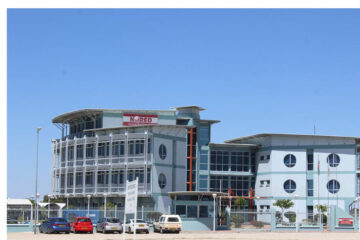Niël Terblanché
The National Planning Commission (NPC) has recently completed nationwide consultations to identify key areas for improvement.
This is as the country transitions from its fifth National Development Plan (NDP5) to the formulation of NDP6.
The NPC’s chief national development advisor, Sylvester Mbangu said during a consultation session with the Khomas Regional Council last week that these consultations have highlighted various critical issues such as poor-quality roads, inadequate health facilities, and limited educational resources.
He added that underdeveloped sports and water facilities, particularly impacting high-density areas and contributing to a rising housing backlog were also highlighted.
NDP5, which spanned from 2017 to 2022, aimed to address multiple developmental challenges through its four pillars: economic growth, human resource development, environmental sustainability, and governance.
Mbangu said that despite ambitious goals, the plan faced significant hurdles.
“The Namibian economy, heavily reliant on commodities and foreign investments, saw an average contraction of 1% during this period, largely due to a global downturn in commodity prices and decreased investment flows,” he said.
Mbangu acknowledged considerable difficulties encountered during the NDP5 period and added that it was the most challenging period in Namibia’s developmental agenda.
He indicated that specific targets under NDP5 included reducing poverty, enhancing food security, and boosting economic participation across marginalized communities.
Mbangu added that there was a concerted effort to increase agricultural productivity, improve disaster preparedness, and strengthen social safety nets.
“Looking ahead, NDP6 aims to build on the lessons learned and incorporate more robust strategies to achieve the long-term goals outlined in Vision 2030,” he said.
According to Mbangu, this will include addressing the systemic challenges revealed through public consultations and refining the development approach to better meet the needs of Namibia’s diverse population.
Mbangu said that the shift from NDP5 to NDP6 represents a critical juncture for Namibia as the country works to recalibrate its development trajectory, focusing on more sustainable and inclusive growth.
According to Mbangu, NDP6 will likely focus more on strengthening economic resilience, enhancing social services, and further integrating community feedback into national policy strategies which will set a hopeful course toward achieving the goals of Vision 2030.




